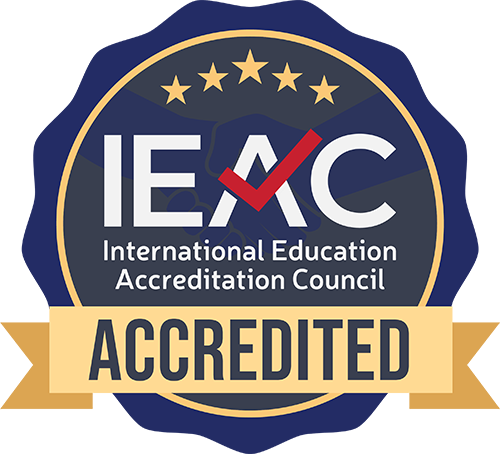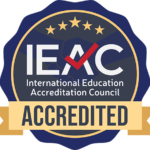A Masters thesis should be at least 40,000 words, but not exceeding 70,000 words. A Doctoral dissertation should be at least 70,000 words.
Style and Formatting
The students and the mentor should discuss and decide on the format for the style and presentation of the thesis or dissertation (this includes referencing styles). It must follow one of the recognised academic formats. It must be written in an academic scholarly style.
The following points should be noted:
- Footnotes (numbered), if used, should be placed at the end of each page, the chapter, or at the end of the manuscript. Correct use of ibid., op.cit. and other notations is required.
- A Bibliography is required in alphabetical order at the end of the manuscript.
- The manuscript must be typed/word-processed, double-spaced, single-sided with a 2″ margin on the left. It may be printed on A4 or 8″X11″ (US letter-size) paper only. Pages must be numbered.
Students may publish material resulting from the research undertaken while on the Academic program but should state the status of the material explicitly in the publications. The inclusion of such published materials in a thesis or dissertation may be subject to special regulation. The acceptance of such material does not of itself constitute proof that the work is of sufficient quality or significance to merit the award of the degree concerned.
collapse sectionSubmission
Students should submit the final version of their thesis/dissertation to their Mentor, who will conduct the first assessment as an internal examiner. Once examined by the internal examiner and recommended as worthy of official submission, the student should submit two softbound copies of the thesis to the Registrar at Warnborough College for external examination. The copies should be soft-spiral bound. All pages must be numbered, and the manuscript must have the name of the student and the title of the thesis/dissertation on the front cover. A CD or diskette (checked for viruses) containing the entire thesis/dissertation in a common format (eg. PDF, MS Word, RTF) should be submitted at the same time.
Each thesis/dissertation should be packed into a separate but unsealed padded envelope, ready in all aspects (apart from address), to be posted to the examiners when appointed. The College also offers a binding service that will be helpful to students in terms of reducing postage and printing costs.
The College requires that the final version of each thesis/dissertation be submitted in softcopy format (eg. on floppy disk, CD-ROM) so that it can archived for the College’s records.
There must be a synopsis for the thesis/dissertation of no more than 500 words placed at front of the manuscript. This provides an overview of the research topic.
Students should allow between 6 to 8 weeks for their manuscripts to be examined. During the examination process, students are required to answer questions raised by the examiners (viva voce). This may be done via e-mail, post, fax, or telephone. In some cases, a student may be required to face a panel of examiners in person.
Students will be informed of their results when the examiners have reached a consensus. If the work has been passed, the student can complete a Graduation Form and prepare for graduation. Any corrections recommended by the examiners must be made on the final copy submitted to the College. Approved copies of the manuscript may be lodged with the Library of Congress and/or The British Library. If the work has been failed, the student will need to resubmit.
If the work is passed, the College requires two hardbound copies, incorporating any necessary changes or amendments as recommended by the examiners. The binding can be done by the College, or it can be doone by the student and then submitted to the College Library. It is recommended that the cover be either dark blue/navy or black, with gold embossed lettering.
Suggested Format For Thesis and Dissertations
- To include a listing of all chapter headings with page numbers
- Sub-sections of chapters can also be included. It will also include the bibliography and any appendices. Any tables, figures or diagrams can also be listed following these items.
- A short overview of the thesis including any conclusions and recommendations.
- you may wish to acknowledge the help you have received from particular organisations or individuals.
- providing a background to the thesis
- stating the objectives of the thesis
- saying why this topic is significant
- giving a preliminary outline of how you intend to approach it
- how you have conducted your literature search
- what methods you have used to collect data
- why these particular methods were chosen
- what are the strengths and weaknesses of these methods
- what writers on research methodology have to say about these methods
- what are the strengths and weaknesses of your research
- this should be a detailed account of everything you have done – it should enable another researcher to duplicate your research in detail
- this is a review of all the relevant literature – books, articles and other sources of reference. This could occupy several chapters with titles, which reflect the content.
(ie. the reseach you have actually undertaken). Diagrams, tables, graphs, pictures all help to illustrate this and make it more interesting.
- an evaluation of what your research findings actually mean in terms of the objectives of your thesis.
- In addition to the findings from the primary research, account should also be taken of the contribution to the debate from your literature review.
- should address the original objectives and say how these have been met, or not, as the case may be.
- should provide suggestions, based on the conclusions, for further action. This could include further research into particular aspects, which have emerged during the course of the research.
Note: These are not chapter headings, but intended to give guidance on what should be in the thesis and the kind of order it should follow. Discuss referencing styles with your mentor, although the Harvard and Oxford footnote systems are most commonly used.
* This information was prepared by Dr. D. A. Watt, FRSA.



